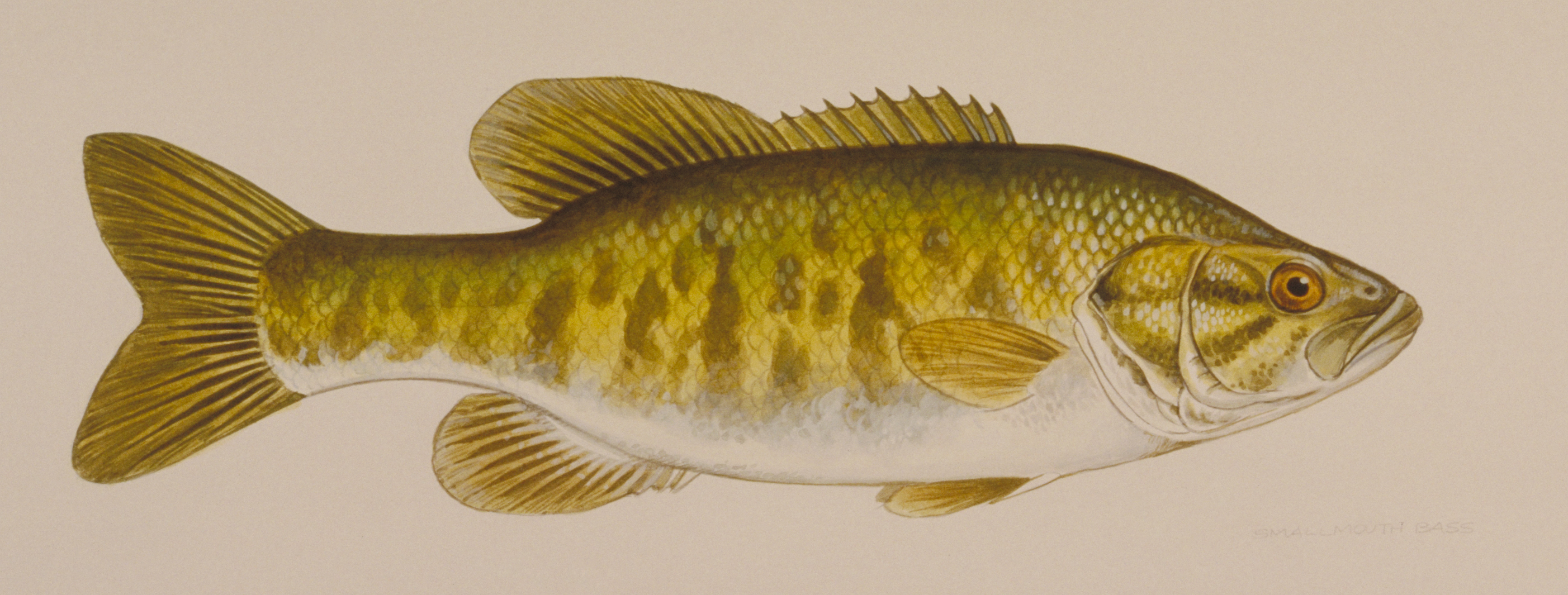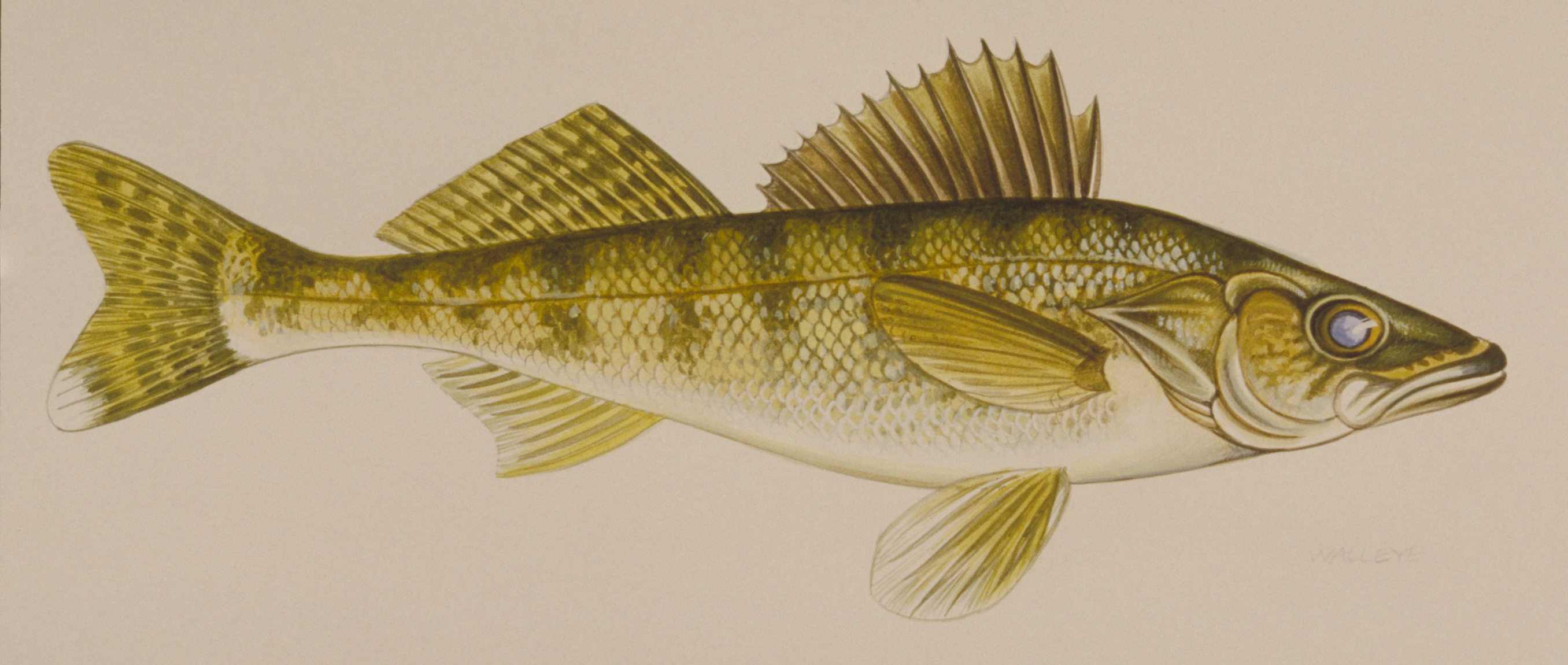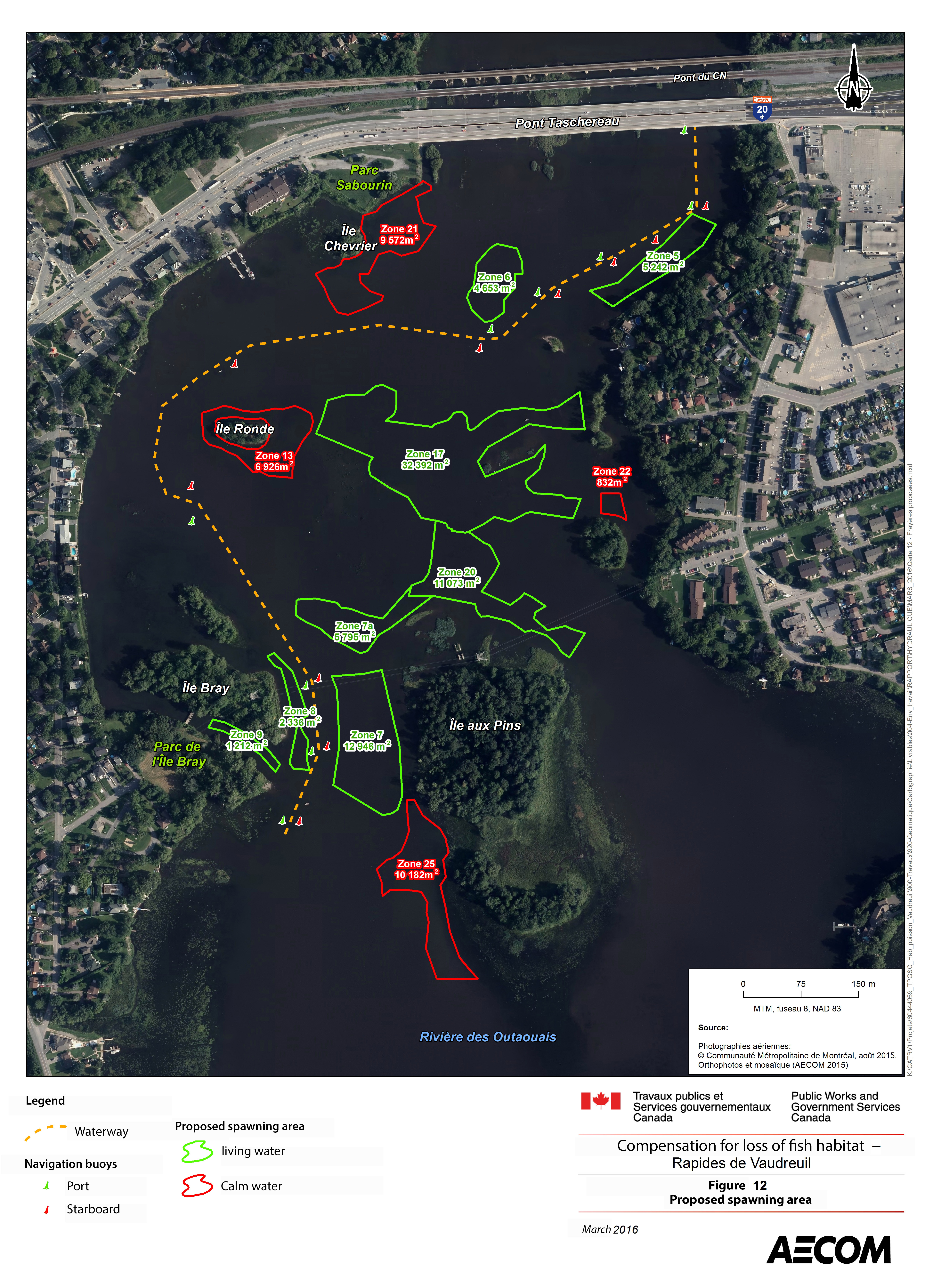Samuel De Champlain Bridge - Vaudreuil Rapids project
Table of Contents
- Project background
- Project description, timeline and characteristics
- Environmental benefits of the project
- Mitigation measures during the work
Project background
Large-scale construction projects inevitably impact the environment. Many compensation projects were analyzed by Infrastructure Canada in collaboration with Fisheries and Oceans Canada, Environment and Climate Change Canada, and Public Services and Procurement Canada, to offset the loss of natural environment caused by the construction of the Samuel De Champlain Bridge.
The Vaudreuil Rapids project created new fish habitat in both fast flowing and calm waters to compensate for the loss of these types of habitats as a result of the construction of the Samuel De Champlain Bridge. The project was carried out in the Ottawa River's Vaudreuil Rapids, between the Taschereau Bridge and Île aux Pins, in the municipalities of Vaudreuil-Dorion and Pincourt.
Project Description, Timeline and Characteristics
Description
The project involved creating spawning grounds specifically designed for yellow walleye, lake sturgeon and smallmouth bass over an area of approximately 10 hectares. A number of other fish species may also use the newly created structures.
The spawning ground locations were selected to target areas with the greatest potential for new fish habitats. Consequently, these structures were built in areas that meet the required criteria of current speed and water depth for fish spawning.
Characteristics
Approximately 70,000 m3 of stones were deposited in very specific locations in the river to create an environment conducive to fish spawning and feeding. The stones were transported by barge from Sabourin Park, and an excavator was used to place the stones on the riverbed.
Timeline
To comply with the mandatory restriction of work in water for the protection of fish and fish habitat, the work was carried out over two years (2017–2018), during a five-month period from July to December of each year.
Winter 2017
- Call for tenders and contract award
Spring 2017
- Survey of shoreline to establish a baseline for determining whether the work has caused erosion
- Public information session to inform residents about the project
- Worksite mobilization:
- Preparation of worksite and stone storage areas
- Installation of floating docks
- Installation of turbidity curtains (for sediment containment)
Summer–Fall 2017 and 2018
- Completion of in-water works in white water areas (July to December 2017 and 2018)
- Completion of in-water works in calm water areas (September to December 2017 and 2018)
Fall 2018
- Removal of floating docks, turbidity curtains and other temporary facilities related to the work
Spring 2019
- Restoration of Sabourin Park according to standards
Project's environmental benefits
This important project contributes to the improvement of fish stocks in the St. Lawrence River by creating new fish spawning grounds in fast and slow flowing water. In addition, the project increases available feeding and rearing habitat for fish near the spawning grounds, improving the area for the entire life cycle of the fish. A secondary benefit of the project is to increase biodiversity in the area by attracting birdlife which feeds on fish.
 |
 |
 |
| The Smallmouth Bass | Lake Sturgeon | Walleye |
| Credit: ACART Communications Inc. Source: Fisheries and Oceans Canada |
Mitigation measures during the project
The establishment of fish spawning grounds in the Vaudreuil Rapids could cause inconvenience to people living near Sabourin Park. That is why Infrastructure Canada has developed approximately 60 mitigation measures, aiming among other things to reduce citizens' life quality impacts, that will have to be implemented by the contractor.
Noise management
- Compliance with municipal and provincial noise abatement regulations
- Use wherever possible of quieter equipment and assurance that equipment has good-quality mufflers in proper working order
- Placement of noise-producing equipment far from residences when possible;
- Use of variable-intensity vehicle back-up alarms
- Prevention of impact noise caused by the rear tailgates of dump trucks
- Minimization of idling of gasoline-powered vehicles and equipment
- Implementation of a communication procedure to keep local residents informed of noise management on the worksite and allow them to make complaints or provide comments
Air quality management
- Compliance with provincial thresholds for airborne particles
- Dry materials will be sprayed with water, and waste will be covered over to prevent the wind from raising dust or blowing debris
- Leak-proof or standard dump trucks will be used, based on requirements, and covered with tarpaulins to limit the dispersal of fine particulate matter into the air
- Streets used by trucks will be cleaned when necessary
Traffic management
- A Traffic Management Plan will be put in place to minimize traffic obstructions during peak hours and take into account traffic from adjacent construction sites during the work period
- All transportation of bulk material from west of the Taschereau Bridge will be prohibited during the morning rush hour (6:30 a.m. – 9:00 a.m., Monday to Friday).
- No traffic lights will be permitted for a left turn at the exit of Sabourin Park.
- A flagperson will be present at the site entrance at all times
- Date modified:
